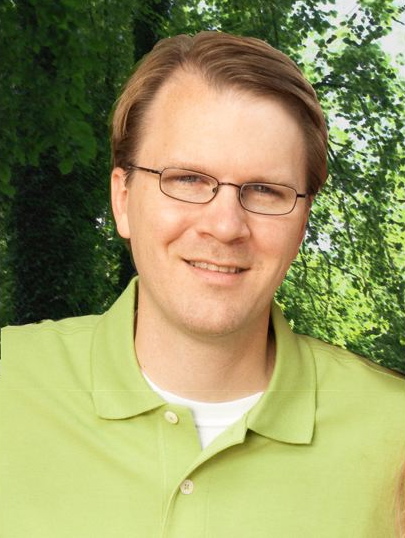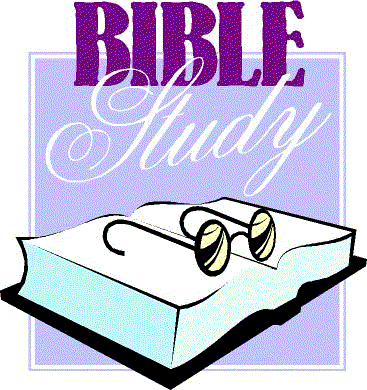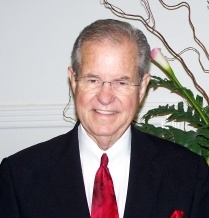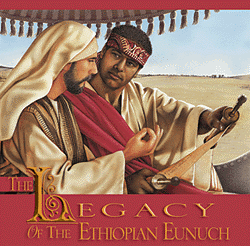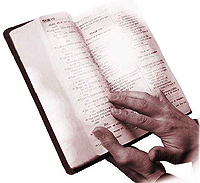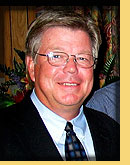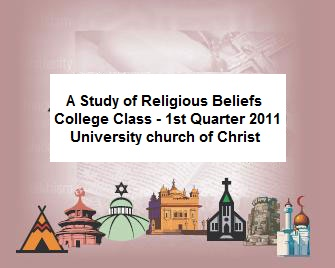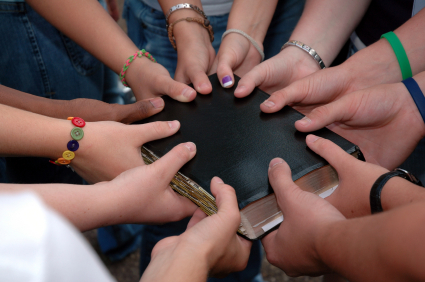Home | About Us | Directions | Bulletins | Sermons & Audio | Cross Of Christ Studies | Classes | Student and Parent Resource Page | Dangers Facing the "Non-Traditional"
Are All churches of Christ Alike?
by Lowell Blasingame
|
They certainly should be and that for several reasons. First, the Bible identifies the sower's seed as "the word of the kingdom" (Matthew 13:19). The Lord's kingdom and His church are the same thing; and since, as ordained by the Lord at the time of creation (Genesis 1:11-12), a seed produces after its kind, the seed which produced the Lord's church in the first century will accomplish the same thing today. Second, the Lord's word is a pattern, or form of doctrine, which when followed in the first century, brought churches into existence. We are admonished, as was Moses when he made the tabernacle, to make all things" according to the pattern" (Hebrews 8:5). We accomplish this by not going beyond the doctrine of Christ (2 John 9), by refusing to add to or take from His word (Revelation 22:18-19). Building according to this pattern, as the apostles did in the first century, produced churches that were alike in name, doctrine, organization, and worship. Adhering to that pattern will do the same thing today. Third, apostolic consistency teaches that the same thing is to be taught "everywhere in every church" (1 Corinthians 4:17). The apostles, whose teaching the Holy Spirit guided, did this; and if we today follow the apostolic teaching given by the Spirit, we too will teach the same things. When two churches differ in teaching and practice, it may be that neither is following the Spirit's teaching, or that one is and the other isn't. One thing is certain--both cannot be following the Spiritís teaching if each teaches and practices different things! All churches of Christ ought to be alike in every way. We become unalike when we deviate and depart from God's word. Unfortunately, this does happen sometimes; and while churches for a while remain alike in name, they begin to differ in organization, work, and worship. These changes emerge slowly and little by little and take place over two or three generations so that they often aren't easily detected. This has and is occurring in churches here in our state, as well as in other states across the nation. All churches of Christ are not now alike in their organization. The New Testament revealed for God's people no functional unit other than local churches, and these were autonomous and independent of each other. Church historians say that they were not bound or tied together in "the coils of any ecclesiasticism." That simply means that there were no synods, conventions, or associations that linked local churches into units larger than one local church. In the New Testament, each local church had a plurality of elders (Acts 14:23) who were also called bishops and pastors (Acts 20:17,28). Their work was limited to overseeing the local church of which they were a part(1 Peter 5:1-2). Again, the testimony of church historians is that these elders were congregational, not diocesan, in their work of oversight. When the first apostasy came, it began in the organization of local churches in making a difference between the words bishop and elder, which in the New Testament, are used interchangeably to identify the same men. They began to use bishop to identify the elder who served as chairman of the local-church business meeting because he was its overseer. In Biblical usage, the word refers to elders and their relationship to a local church, not to one's position in a meeting for transaction of the churchís business. In time, this became a permanent position in a local church. Thus, the church altered its organization by having a bishop over elders, with the two having different work roles. The cities in which the bishops resided came to determine their power and influence. The leading cities had arch-bishops, who were over a diocese of churches. Eventually, in 606 A.D., there emerged the first bishop over the universal church, Boniface III of Rome; he was the first pope over an apostate church. In writing about this, Leslie G. Thomas said, "Had the professed followers of Christ been satisfied to maintain the type of church government authorized by the New Testament, the hierarchy of Rome never would have existed with all its attendant evils. But when people begin to depart from the New Testament pattern and to follow the opinions and desires of men, institutions and practices unknown to the New Testament will soon be in evidence on every hand" (Restoration Handbook, page 22, 1941). Truer words could not have been written, for such has been the case each time men have tinkered with the Lord's way by attempting to improve on it. The plea for restoration of the New-Testament church and abandonment of denominational names and creeds swept like a fire across early America. Both individuals and a number of denominations responded positively to the back-to-the-Bible plea. They refused to continue to wear denominational names or to allow human creeds to govern their faith. They had discovered that following only the New Testament produces only Christians, just as it had done in the first century. Then the movement began to lose its impetus. During the latter part of October, 1849, a number of influential men met at the Walnut and Eighth St. church of Christ, Cincinnati, Ohio. This meeting gave birth to the American Christian Missionary Society as an organization through which churches might centralize their evangelistic work in foreign fields. In the first century, local churches, apart from any other organization, evangelized the world within a 31-year span (Colossians 1:23). Not long afterward, a Female-Orphan School was formed at Midway, Kentucky, and the Midway church became the first on record to introduce musical instruments to the worship. Others may have done this earlier, but because there is no historical record of it, this dubious honor belongs to Midway. By 1906, the breach between those promoting the Missionary Society and using musical instruments had so widened that for the first time, the Bureau of Religious census recognized a difference between them. Those using instruments and promoting the Society were called Christian Churches; those opposed were known as churches of Christ. Another unscriptural cooperative arrangement popularized following World War II was the sponsoring-church arrangement. It really wasn't new; it was the resurrection of the old Texas Plan that had been used about 75 years earlier for churches that opposed the Texas State Missionary Society. Under this arrangement, they selected one local church as the receiving-and-disbursing church to which others sent funds. The receiving-and-disbursing church elders directed and oversaw the work being done. Following WWII, the Broadway church in Lubbock, Texas sent Otis Gatewood and some others to tour Germany and bring back a report about the possibility of evangelism there. When they returned, they reported the devastated condition of the war-torn cities and that many lacked food and clothing for the approaching winter. The Lubbock church undertook the task of collecting large amounts of clothing from other churches. They prepared and shipped it for distribution among needy people in Germany. This plan for church cooperation became known as a sponsoring-church cooperative arrangement. It, like the receiving-and-disbursing plan formed at Austin, Texas in 1867, evaded the mistake (i.e., having another organization for evangelism) made by those who formed a Missionary Society. These cooperative arrangements violated the Holy Spiritís limitations on the eldersí oversight. The elders are to "tend the flock of God which is among you" (1 Peter 5:2) or "the flock over which the Holy Ghost hath made you overseers" (Acts 20:28). Both the Texas Plan and the Sponsoring-Church arrangement violated this restriction by having the elders of one church oversee a work of many churches. When 5th and Highland in Abilene was getting the national radio program, Herald of Truth, off the ground, its elders sent out letters to other churches of Christ asking, "Will you be one of 2,435 churches of Christ that will contribute $12.50 per week for this radio program?" Somewhere, I still have my letter signed by Brother Haddox, one of the elders. If 2,435 churches can do evangelistic work under direction of one churchís eldership, why canít that same church oversee all the evangelistic work of all the churches in our country or the entire world? This plan opens the door back to Rome. Local churches can and do cooperate in evangelism when each church acts under the oversight of its elders and sounds out the gospel according to the ability that it has. But local churches do not cooperate scripturally by forming organizations, such as the American Christian Missionary Society or the World Bible School, and working through them. Nor can they cooperate scripturally by centralizing their funds in one local church, whose elders oversee a work of a plurality of churches. The Holy Spirit dictated that men should be elders of but one church (Acts 20:28) and limits their oversight to "the flock which is among you" (1 Peter 5:1-2). In the beginning, the Herald-of-Truth program was introduced as a program of churches of Christ. However, the introduction was later changed and it was introduced as a program of the Fifth & Highland church in Abilene, Texas. The defense changed to its being Highland's work, with sister congregations that sent contributions helping her do that work. Two questions were raised: 1. What Scriptural right does a congregation have to assume a work beyond its financial ability and call upon sister churches to help it? 2. How do we determine which churches are to be sponsoring churches and which are to be helping churches? Small departures from the faith, taken over a period of time, carry us just as far from the truth as does one gigantic stride. The Herald of Truth slowly evolved into another organization for evangelism. This was illustrated in an ad it carried in The Christian Chronicle, January 2002. The ad promoted Herald-of-Truth Charitable Gift Annuities; it said, "You will also save on taxes, as well as supporting worldwide evangelism of a 50-year old trusted organization." So what began as an unscriptural cooperative arrangement of churches for evangelism evolved into a "50-year old trusted organization" for world-wide evangelism. The Lord's organization, local churches, successfully carried the gospel into the entire known world within thirty years of its beginning (Colossians 1:23). Other man-made organizations, such as ACMS, Herald of Truth, World Bible School, etc., haven't improved on this. In 1941, Leslie G. Thomas wrote a small book, Restoration Handbook, that discusses the church, the falling away, and the restoration. In showing how the first church apostasy came about, brother Thomas said, "But when people begin to depart from the New-Testament pattern and to follow the opinions and desires of men, institutions and practices unknown to the New Testament will soon be in evidence on every hand" (page 22). This departure began with the misuse of the words elder and bishop, which led to a change in the churchís organization that finally evolved into Catholicism. Given time, little acorns become big oaks, and little departures make corruptions and perversions in the Lord's church.
|
Other Articles by Lowell Blasingame
Cross-Centered Preaching
"By What Authority"
Rejecting the Reins

